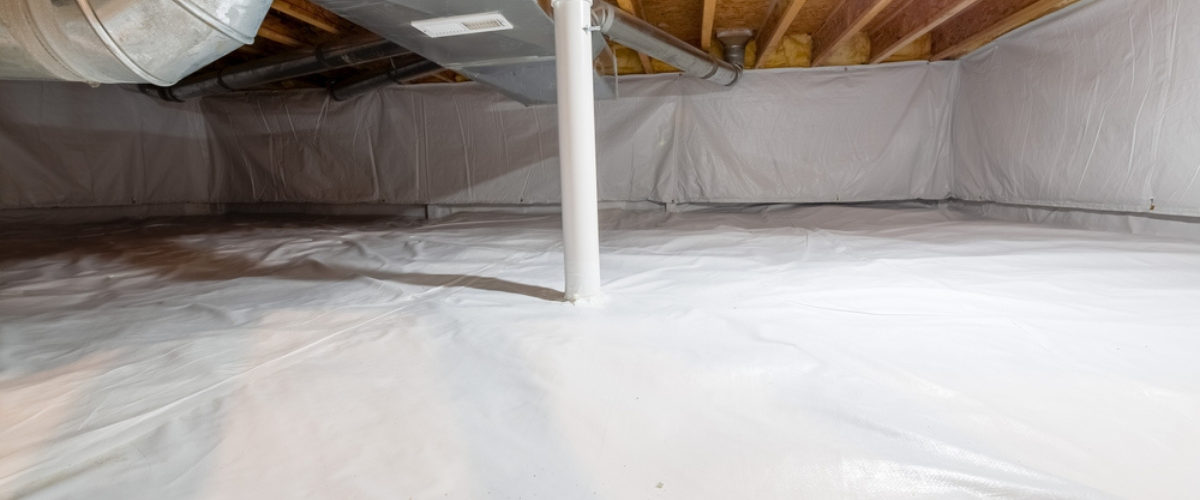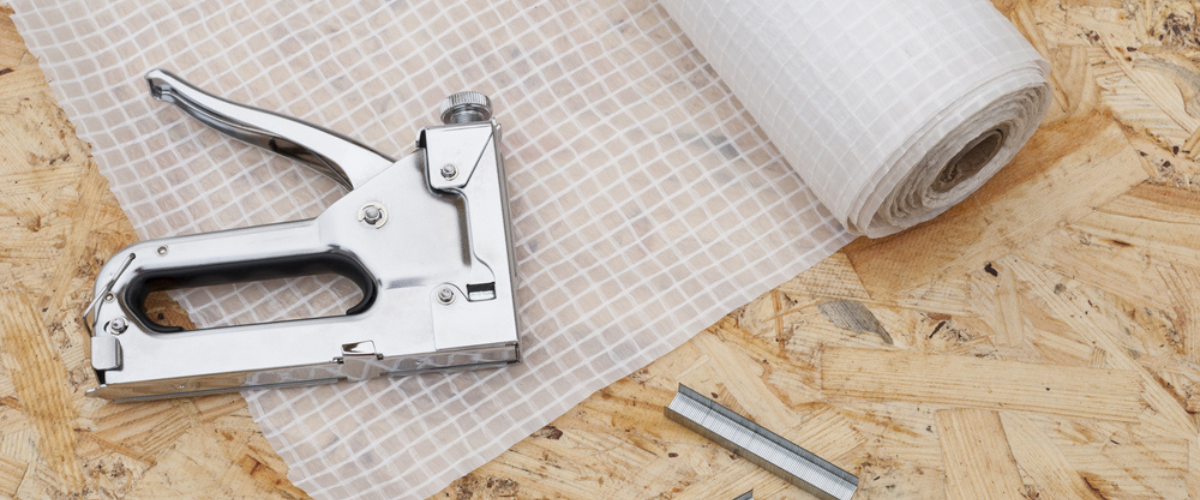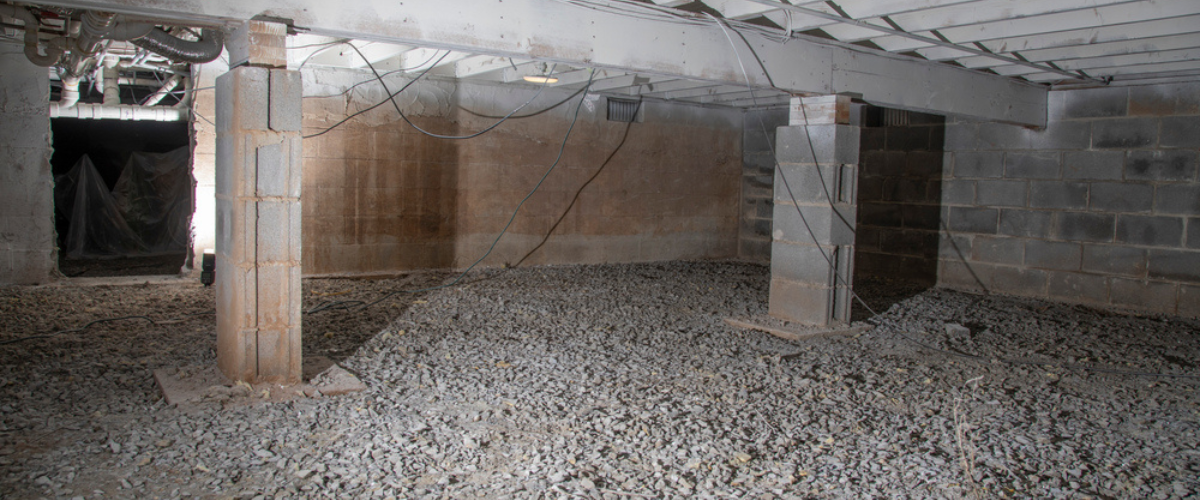Crawl Space Humidity Issues and Solutions
Crawl spaces are supposed to be completely dry and devoid of moisture at all times, but this information isn't always widely known. If this is not the case, water and water vapor may contribute to problems such as mold growth, rotting wood, and insect infestations. Because of the stack effect, the moisture that is in your crawl space does not simply remain there; rather, it moves up into the rest of the house.
First things first, let's take a step back and discuss what humidity is. The ratio of the amount of water vapor in the air to the maximum amount of water vapor that the air can hold at a given temperature is what we mean when we talk about humidity. The term "dew point" refers to the point at which temperature and humidity are combined. Even if the relative humidity is lower than normal and the temperatures are high, your crawl space may still be damp if the temperatures are high enough.
Additionally, a dry crawl space can be produced by having high humidity in conjunction with low temperatures. This happens in parts of the country where it gets extremely cold. In this article, we will examine crawl space humidity, it's causes, and how to create optimal humidity levels to mitigate mold issues.

What Should The Humidity Level In My Crawl Space Be?
The air quality in your crawl space can be kept in good condition by ensuring that the humidity never rises above 65%. A high level of humidity in your crawl space can have a number of unfavorable consequences, including rot and mold. Utilize a digital thermo-hygrometer to get an accurate reading of the relative humidity in your crawl space. One can be found for as little as fifteen dollars. Is the relative humidity greater than 65 percent? It is time to take action.
What Are The Dangers Of High Crawl Space Humidity?
Wood Rot
The rotting of wood is yet another common issue that can be brought on by having an excessive amount of humidity in your crawl space. When there is an excess of humidity, the moisture content of the wood rises above the point where the fibers become saturated. The structure of your home is put in jeopardy when this occurs because it causes the wood to immediately begin to rot.
Mold Growth
Mold is most common in damp environments. If your crawl space is damp, it is almost certain that you will have to deal with mold issues within a short period of time. This is because mold thrives in damp environments. Even if the mold growth on the wood in your crawl space only appears in a few spots, you still have a serious problem on your hands. White mold will almost always grow on the surface of the wood, but it will not cause any significant damage to the wood. However, this is still an indication that the crawl space has excessively high levels of moisture and that you need to take the appropriate preventative measures.
The presence of brown or black mold is a more significant problem. This could be a fungus that causes wood to rot, which indicates that there is already damage being done to the structure. It is imperative that immediate action be taken. The Poria fungus can be identified by its characteristic appearance, which resembles the growth of roots into the wood from the soil below. This particular kind of fungus poses a significant threat to the structure of your home. A structure can be completely destroyed by the Poria fungus in just a few short months if professional assistance is not obtained.
Bugs & Pests
When there is an excessive amount of moisture in your crawl space, another common issue that arises is the presence of insects. In particular, spiders, termites, slugs, camel crickets, millipedes, and centipedes favor damp crawl spaces. Millipedes are also attracted to moist environments. This is due to the fact that they have access to food, water, air, and safety in these areas.

Why Do I Have High Humidity In My Crawl Space?
Dirt Crawlspace Floor
During the preliminary stage of construction, a crawl space with a dirt floor is not only simple but also economical. On the other hand, the dirt floor essentially makes it simple for water to pass through. The problem with dirt crawl spaces is that it is virtually impossible to address a humidity problem without first installing a vapor barrier of sufficient quality. This barrier prevents water from the ground from seeping through and enables you to solve the problem of excessive humidity.
Looking for no contract SEO services? Click the link and check out our partners!
There will be times when the ground underneath your crawl space is completely soaked with water. The levels of humidity continue to rise as a result of the evaporation of moisture into the air. Even if it seems as though the soil is dry, this is most likely due to the fact that moisture is evaporating into the crawl space. It will be very simple for you to determine whether or not you have a problem with ground moisture evaporation after you have installed a thermo-hygrometer.
Open Vents
It used to be a requirement of the old building code that crawl spaces have vents, but subsequent research revealed that these vents actually made the situation worse, particularly in terms of humidity. The initial concept called for airflow in both directions; air would freely flow in and out, reducing the likelihood that there would be any issues with condensation. On the other hand, it was discovered that leaving vents open actually brings about an increase in the amount of moisture. Because vents allow cooler air from outside to mix with warmer air from inside, the level of humidity in a crawl space tends to be higher.
Standing Water
If you have standing water in your crawl space, it could lead to conditions that are damp, moldy, and musty. Crawl spaces that have been flooded consistently release water vapor into the air, which results in an increase in the overall humidity of the crawl space. The situation is even more dire if the water in the crawl space has risen to the level of the vapor barrier and is standing there.
The vapor barrier's main job is to keep the moisture that comes up from the ground below under control. The vapor barrier causes an increase in the release of moisture into the crawl space, which leads to an increase in the levels of humidity that are present within the space when it is covered by the standing water.
The majority of the time, homeowners are not aware that the crawl spaces beneath their homes are flooded. Because of this, it is a good idea to conduct routine checks of the area to determine whether or not there is any standing water there. In your crawl space, some of the warning signs you should look for are horizontal watermarks on the walls and piers, dirt covering the vapor barrier, and wet soil along the perimeter of your crawl space.
There are many different factors that can lead to a flooded crawl space. These include rain that lasts a long time or is particularly intense, leaks in the plumbing system, gutter downspouts that discharge next to your house, and the melting of snow.

How Can I Reduce Humidity In My Crawl Space?
It's not good when the humidity levels in your crawl space are high. In the long run, ignoring them can lead to costly repairs that need to be done. The following is a list of potential solutions to the problem.
Deal With Standing Water
If you have noticed flooding in your crawl space, the first step is to figure out what might be causing the issue. Investigate whether or not it is possible that the soil slopes in the direction of the foundation. If this is the case, you should take the appropriate steps to ensure that the land slopes away from the base of your house.
What if the problem is caused by a leak in the plumbing? If this is the case, you will need to locate an experienced plumber who can locate the specific pipe that is leaking and immediately repair it. Even a leak as small as a pinhole can sometimes result in significant complications.
Install a Sump Pump
The term "sump pump" refers to a pump that is housed within a bucket and buried underground in the crawl space of your home. The water that collects in your crawl space eventually makes its way into the bucket. After the water has been collected in the bucket, the pump will turn on and send the liquid away from your property. It's possible that installing a sump pump is the best way to prevent water from getting into your crawl spaces. After you've had it installed, you should make it a point to test it on a regular basis to ensure that it's carrying out its intended purpose correctly.
Install A Vapor Barrier
The floor of your crawl space is protected by a vapor barrier. It is especially important to have this thick sheet of plastic in crawl spaces that have dirt floors. The presence of vapor barriers helps to prevent moisture from building up underneath them, which in turn helps to keep moisture from reaching the floor joists made of wood. The barrier also contributes to the insulation's ability to remain dry.
When installing a vapor barrier, you should consider hiring a professional. This is due to the fact that the vapor barrier in your crawl space not only regulates the humidity in that area but also safeguards the air in your house. You want to make sure that the installation is done correctly so that the air inside your home continues to be clean and allergen-free.
Utilize a Dehumidifier
The installation of a crawl space dehumidifier is a further step that is frequently required for maintaining humidity levels at the appropriate level. In most cases, a crawl space dehumidifier will be installed in such a way as to allow for the greatest possible amount of air circulation within the crawl space. The crawl space is filled with fresh, dry air thanks to the circulating fan in the ventilation system. This contributes to a reduction in the amount of humidity.
Conclusion
It is essential for the well-being of your home as a whole that the humidity levels in the crawl space be properly managed. Mold, rot in the wood, and pest infestation are all things that can cause your home's structural integrity to deteriorate over time if there is excessive moisture in the crawl space. Consider putting in a sump pump, crawl space dehumidifiers, or a vapor barrier in your home if you believe there may be an excessive amount of moisture in the air there.

